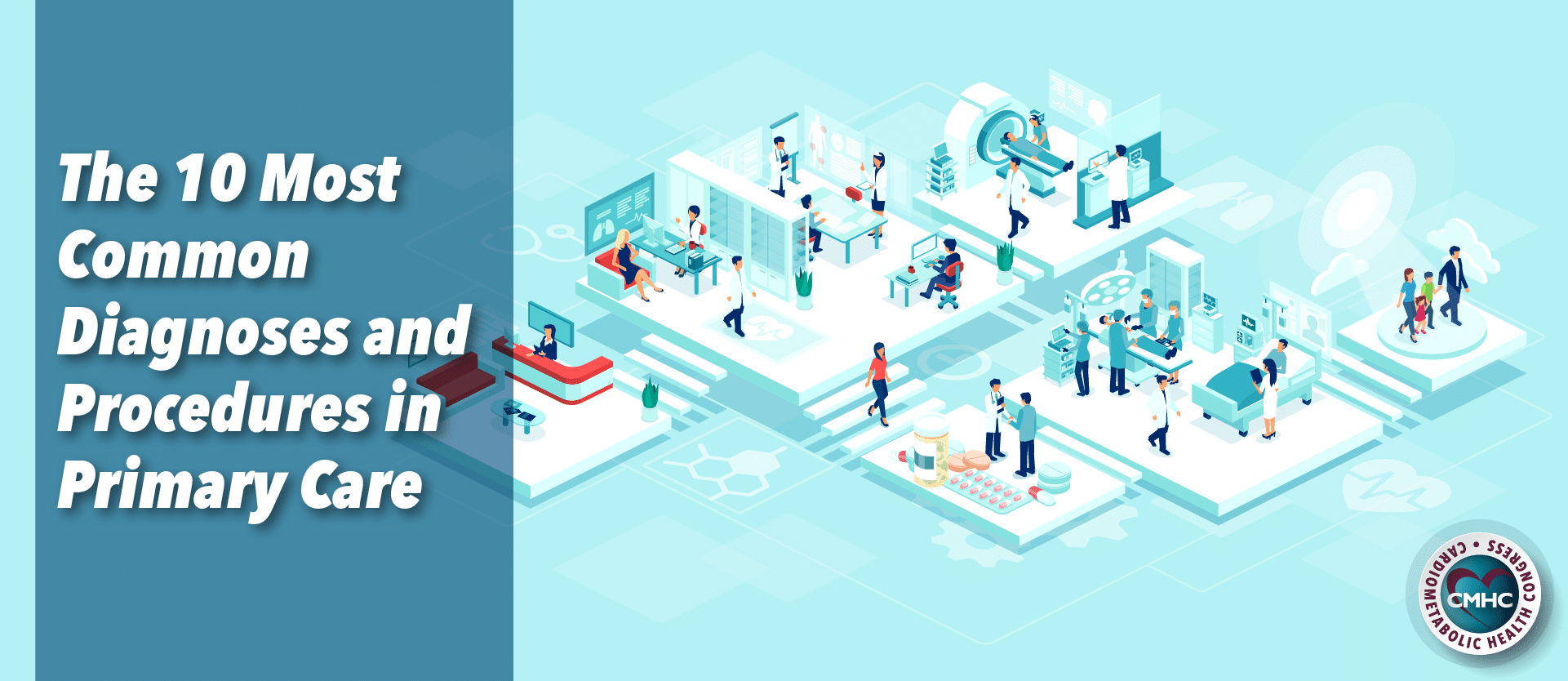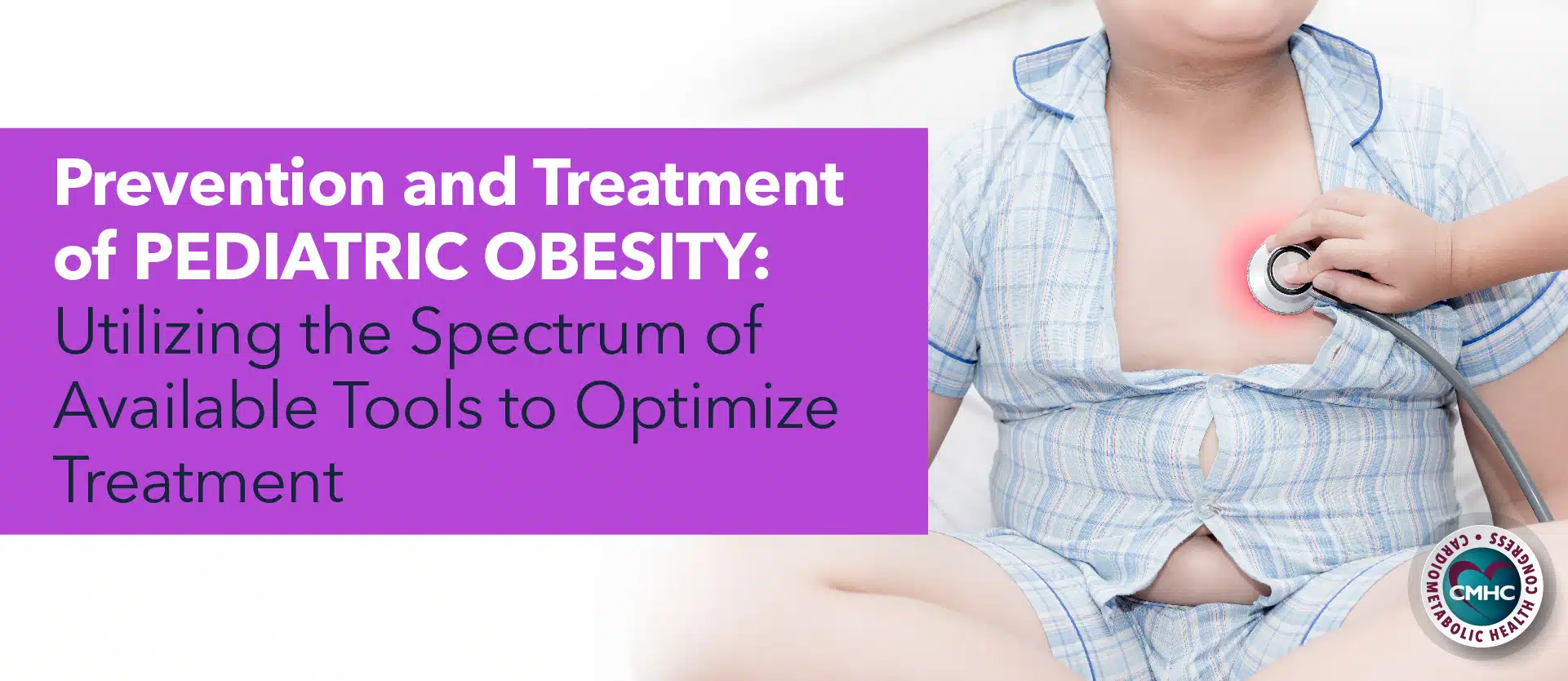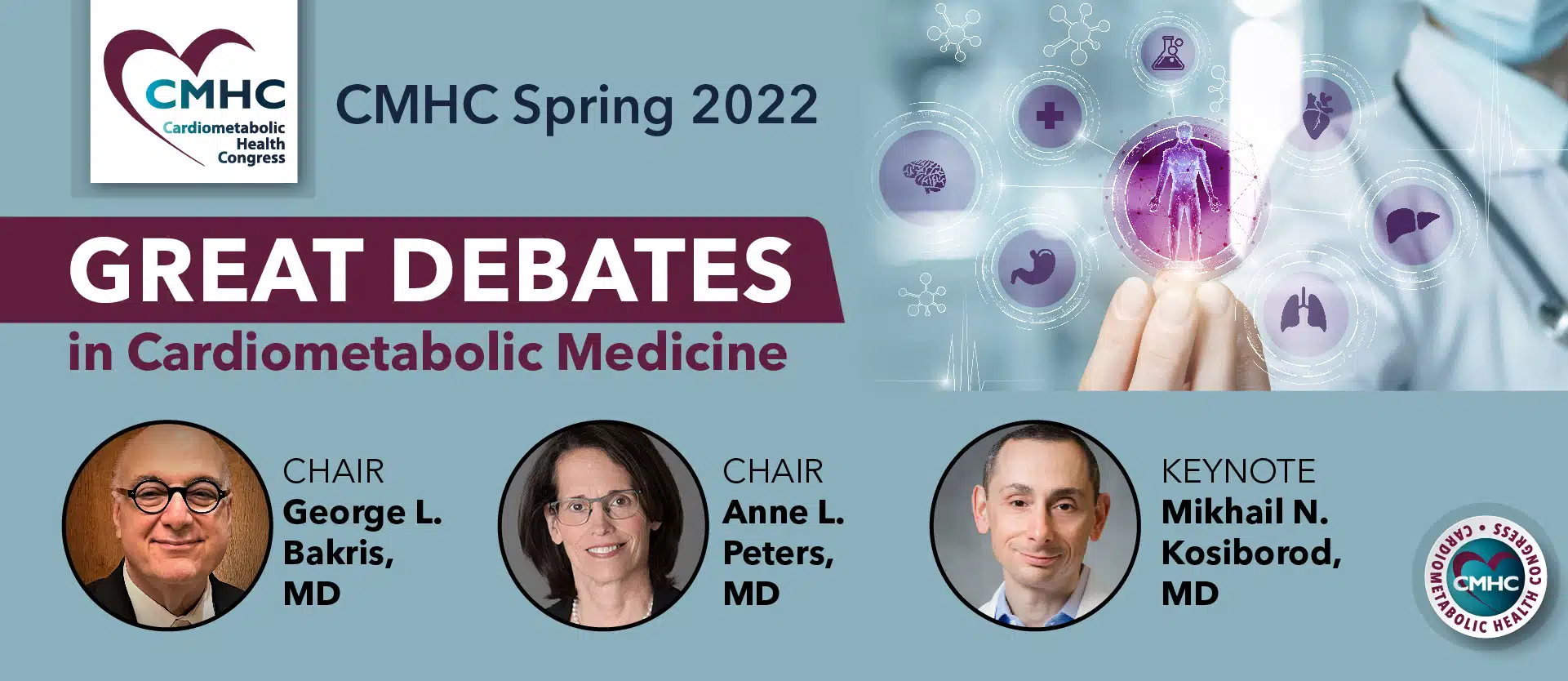Spearheading the fight against cardiometabolic disease alongside cardiologists and cardiometabolic specialists are primary care physicians – integral members of the healthcare system. Leaders in population health management and preventative personalized patient care, PCPs play a vital role in improving outcomes and reducing mortality rates, ultimately contributing to the increased longevity and life expectancy seen in the population. Without the supervision of primary care physicians, patients are at risk for receiving diagnoses at later stages of illness, which can dramatically impact health outcomes and worsen complications.
A recently released report by Definitive Healthcare identified the 10 most common diagnoses and procedures in primary care, providing more insight into the illnesses currently plaguing the American population.
Most Common Physician Diagnoses
Of the 10 most frequently assessed diseases, the majority fall into the cardiometabolic category – an undeniable sign of the growing public health crisis of cardiovascular disease. Hypertension tops the list, with a reported 18,599,408 diagnoses followed by hyperlipidemia with 7, 295,102 diagnoses and type 2 diabetes mellitus without complications reported in 5,974,288 patients. These three most common cardiometabolic conditions are preventable with proper oversight and easily treatable if caught in their early stages. Diagnoses made at later stages of these diseases frequently lead to detrimental complications such as heart disease, nerve and kidney damage, as well as increased risk of premature death.
Below are the top 10 most commonly diagnosed conditions by primary care physicians:
-
- Essential (primary) hypertension – 18,599,408 diagnoses
- Hyperlipidemia, unspecified – 7,295,102
- Type 2 diabetes mellitus without complications – 5,974,288
- Encounter for general adult medical examination without abnormal findings – 5,697,517
- Encounter for immunization – 3,911,694
- Hypothyroidism, unspecified – 3,580,245
- Gastro-esophageal reflux disease without esophagitis – 3,386,603
- Atherosclerotic heart disease of native coronary artery without angina pectoris – 2,945,075
- Vitamin D deficiency, unspecified – 2,806,626
- Mixed hyperlipidemia – 2,773,456
Most Common Procedures Performed by Primary Care Physicians
Primarily, physicians perform blood tests and other diagnostic procedures as part of chronic care management. Definitive Healthcare’s study reported 8,106,996 routine venipuncture procedures, placing blood tests at the top of the list. Routine blood testing is vital to early detection of complex medical conditions, which can be preventable and easily treated in their initial phases. Without access to primary care physicians, patients are at risk of developing conditions and allowing disease progression without specialist intervention. Complete blood count tests and comprehensive metabolic panels closely follow routine venipuncture in number of procedures, and are additional necessities to the maintenance of cardiometabolic health.
Second on the list of most diagnosed conditions, hyperlipidemia, is diagnosable by lipid panel, which is only the fourth most common procedure. Undiagnosed hyperlipidemia increases the risk of heart attacks, stroke, and other cardiometabolic illnesses, implicating the need for increased routine lipid panel procedures amongst patients.
-
- Routine venipuncture – 8,106,996 procedures
- Complete blood count w/auto diff white blood cell count – 3,447,630
- Comprehensive metabolic panel – 3,194,525
- Lipid panel – 3,001,238
- Glycosylated hemoglobin test – 2,379,597
- Electrocardiogram complete – 2,061,629
- Therapeutic exercises – 2,045,537
- Immunization administration – 1,961,496
- Therapeutic, prophylactic, or diagnostic injection; subcutaneous or intramuscular
- Assay thyroid stimulating hormone – 1,731,461
Despite the incredible importance of primary care physicians, nearly one third of adult men and 17% of women report not having a personal physician. Due to healthcare access barriers, insurance issues, and the forecasted (and already tangible) physician shortage, a significant number of individuals lack primary care. This is especially palpable in Nevada, Alaska, and Texas, the top three states with the lowest number of patients with reported PCPs.
As industry leaders work to mitigate the effects of the physician shortage while treating an increasing aging population with a growing list of chronic health condition, advancements in cardiometabolic health practice and care are imperative. The 14th Annual Cardiometabolic Health Congress delivers the necessary tools for equipping clinicians with novel hands-on therapeutic protocols and the latest education that can be directly applied to patients. Register today for the go-to forum for health practitioners wishing to stay clinically current and join us in the fight against the growing epidemic of cardiometabolic disease.


















